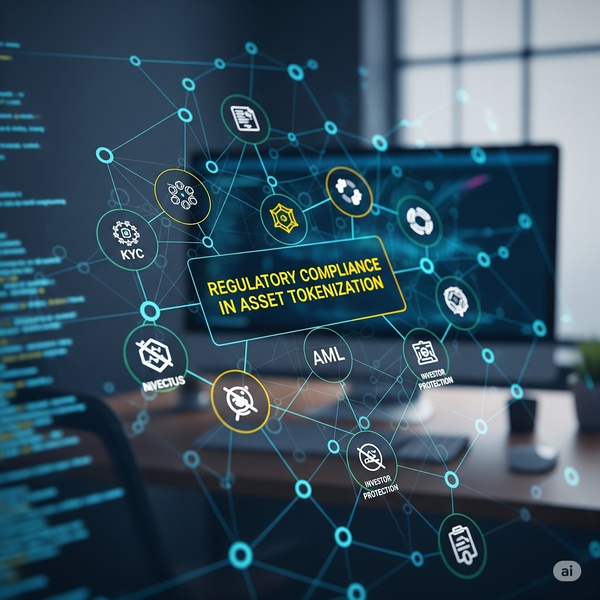Secondary Markets: Unlocking Liquidity for Tokenized Assets

Secondary markets represent a crucial infrastructure component for tokenized assets, providing the liquidity that makes fractional ownership truly viable for investors.
The Liquidity Challenge
Traditional real estate and alternative assets have long suffered from liquidity constraints. Investors often find themselves locked into positions for years, unable to access their capital when needed. This illiquidity premium has historically limited participation in these asset classes to institutional investors and high-net-worth individuals.
Tokenization addresses this challenge by creating digital representations of assets that can be traded more easily. However, the mere existence of tokens doesn't automatically create liquidity - robust secondary markets are essential for realizing this potential.
Market Structure and Design
Effective secondary markets for tokenized assets require careful consideration of market structure. Unlike traditional securities markets, tokenized asset markets must balance the need for liquidity with regulatory compliance and the unique characteristics of the underlying assets.
Order book models, automated market makers (AMMs), and hybrid approaches each offer different advantages. The choice of market structure depends on factors such as expected trading volume, price discovery requirements, and regulatory constraints.
Price Discovery Mechanisms
Accurate price discovery is fundamental to healthy secondary markets. For tokenized real estate and other alternative assets, this presents unique challenges due to the illiquid nature of the underlying assets and the potential for information asymmetries.
Regular asset valuations, transparent reporting, and sophisticated pricing models help ensure that token prices reflect the true value of underlying assets. Technology solutions can automate much of this process while maintaining accuracy and transparency.
Regulatory Considerations
Secondary markets for tokenized securities must operate within existing regulatory frameworks. This includes compliance with securities laws, market maker regulations, and investor protection requirements.
Alternative Trading Systems (ATS) and other regulated market structures provide compliant venues for secondary trading. These platforms must implement robust compliance systems while providing the user experience that modern investors expect.
Technology Infrastructure
The technology stack supporting secondary markets must handle high transaction volumes while maintaining security and regulatory compliance. This includes order matching engines, settlement systems, and integration with blockchain networks.
Smart contracts can automate many aspects of secondary market operations, from trade execution to settlement and compliance checking. However, the complexity of these systems requires careful design and thorough testing.
Market Making and Liquidity Provision
Professional market makers play a crucial role in providing liquidity and reducing bid-ask spreads. For tokenized assets, market makers must understand both traditional market making strategies and the unique characteristics of blockchain-based assets.
Incentive structures, risk management systems, and technology infrastructure must all be adapted for the tokenized asset environment. This includes considerations around custody, settlement timing, and regulatory compliance.
Cross-Platform Interoperability
As the tokenized asset ecosystem matures, interoperability between different platforms and markets becomes increasingly important. Standards for token representation, metadata, and transfer protocols help ensure that assets can move freely between platforms.
This interoperability enhances liquidity by allowing investors to access multiple markets and trading venues. It also reduces the risk of platform lock-in and promotes healthy competition among market operators.
Impact on Asset Classes
Different asset classes benefit from secondary market liquidity in different ways. Real estate tokens may see reduced liquidity premiums and increased accessibility for retail investors. Art and collectibles may benefit from price transparency and fractional ownership opportunities.
The availability of liquid secondary markets can fundamentally change the economics of these asset classes, potentially leading to new investment strategies and portfolio construction approaches.
Future Developments
The secondary market infrastructure for tokenized assets continues to evolve rapidly. Developments in decentralized finance (DeFi), cross-chain interoperability, and regulatory frameworks will shape the future of these markets.
As institutional adoption increases and regulatory clarity improves, we can expect to see more sophisticated market structures and increased liquidity across all categories of tokenized assets.

Rob Gallo
Co-Founder & CEO
A seasoned crypto and tokenization expert with over 25 years experience in gaming and fintech sectors. Rob brings deep operational expertise, a proven track record of building scalable platforms, and a sharp eye for emerging asset classes.
Related Articles

The Economics of Fractional Ownership
Understand the economic principles that make fractional ownership attractive to investors...
Read More →
Understanding Regulatory Compliance in Asset Tokenization
Navigate the complex regulatory landscape of tokenized assets...
Read More →